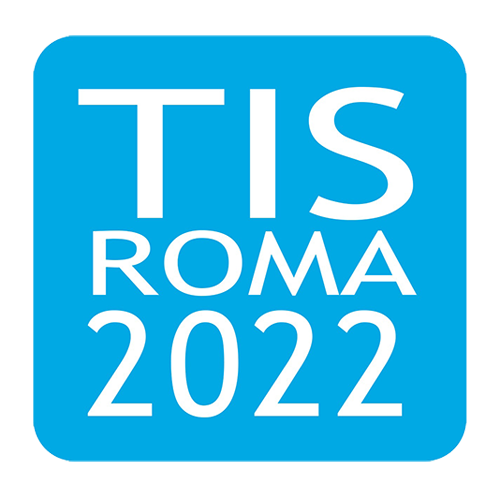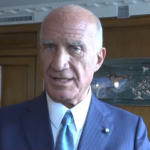TIS 2019
Session 13 – Urban Transport

This session is concentrated on urban transportation problems and it’s possible solutions. Many optimization and alternative models are proposed in order to fight congestion and unstustainable situations. It is chaired by Giuseppe Inturri.
Stefano Carrese, Fabio D’Andreagiovanni, Tommaso Giacchetti, Antonella Nardin and Leonardo Zamberlan – An optimization model for renting public parking slots to carsharing services / Carsharing represents a major example of smart mobility systems. It can relieve people from the costly and non-sustainable burden of owning a car, especially when residing in a city and it is a fundamental component of smart cities. This study provides an overview of relevant regulations for carsharing, particularly the importance of parking policies. Mathematical optimization is proposed in order to be used by local government to analytically choose the best subset of parking slots to rent to carsharing companies. The model corresponds to a Binary Linear Programming problem, which uses binary variables to decide whether a cluster of parking slots is rented or not. It also includes constraints expressing the limits on the number and features of parking slot clusters that can be rented in each city district.
Victoria Gitelman, Anna Korchatov and Shalom Hakkert – Alternative transport means in city centers: exploring the levels of use, typical behaviours and risk factors / Alternative transport means (ATMs) such as e-bicycles, electric scooters, mobility scooters and segways, suggest improved mobility for individual road users, with associated benefits of reduced congestion and energy savings. He problem rises with a fact that uran space is not adapted to incorporate these new means since they use the infrastrucure built for vehicles and pedestrians. This study aimed to characterize the scope of ATM use in Israeli cities, their behaviours at typical urban locations and risk factors, and to consider solutions for safer ATMs integration into urban space. The conclusioni s that the ATM volumes in the cities are not negligible and should be accounted for in planning urban facilities. For safer ATMs integration in the cities, more bicycle facilities and wider sidewalks are needed, accompanied by enforcement and publicity efforts.
Riccardo Ceccato, Francesco Deflorio, Miriam Pirra and Marco Diana – Measure of urban accessibility provided by transport services in Turin: a traveller perspective through a mobility survey / Accessibility is a fundamental aspect for cities and, in order to gain a good degree of connection among different urban areas, it is necessary to smooth the travel experience through the use of efficient modes of public and private transport. Variety of methods have been developed for measuring accessibility, based on different kinds of dataset and using various types of metrics and indices. This paper analyses accessibility focusing on elements such as the travel time perceived by travellers, the real travel distances and the average speed, derived from these two attributes, to connect various areas of the city. Results of this study are tested in the city of Turin (Italy). The evaluation proposed can provide useful information to estimate the accessibility at city level and map the zones for their ranking assessment.
Ndakhona Bashingi, Mohamed Mostafa Hassan and Dillip Kumar Das – The state of congestion in the developing world; a case of Gaborone, Botswana / Constant growth of car ownership and congesion became a global problem when it is about transportation sustainability. Not even cities in te developing countries have been spared of this situation due to influx of cheap imported vehicles. This paper explores the current state of road passenger transportation in the city of Gaborone, Botswana in relation to the users’ perceptions on congestion and delays. Methodology used is the evaluation of individual travellers travel times, experiences with the public transportation system and their understanding of sustainability in relation to increased private vehicle use. The possibilities of modal shift from private vehicle to use of public transportation assisted by the introduction of Information Communication Technologies (ICT) in public transportation is discussed. That could potentially accelerate the move from private vehicle use to public transportation use. This paper also takes into consideration various facets of urban sustainability; sustainability of the urban environment, sustainability of the transportation systems as well as economic sustainability of the transportation system to its users.
Giovanni Calabrò, Giuseppe Inturri, Michela Le Pira, Alessandro Pluchino and Matteo Ignaccolo – Bridging the gap between weak-demand areas and public transport using an ant-colony simulation-based optimization / In the last decades, the external costs produced by the dependence on private transport have determined the social, economic and environmental unsustainability of urban mobility. Besides, conventional public transport is unable to ensure both coverage and ridership in weak demand urban areas characterized by low residential density and high motorization rate. An effective design of feeder bus lines connecting weak demand areas with mass rapid transit nodes should help to shift passenger’s mode of transport from individual to collective mobility. In the present article, the optimized design of feeder bus routes has been approached as a Vehicle Routing Problem applied to passenger transport, using Ant-Colony Optimization (ACO) to find the minimum cost paths within a road graph. The methodology proposed has been applied to the case of Catania (Italy), where a metro line is being extended to the city centre to peripheral areas. Different scenarios have been analysed by comparing a set of key performance indicators based on service coverage and ridership. First results highlight the validity of the method to find suitable routes to cover the gap between conventional public transport and weak demand urban areas and provide useful suggestions for the operation and design of a feeder service.
CHAIRMAN: Giuseppe Inturri





